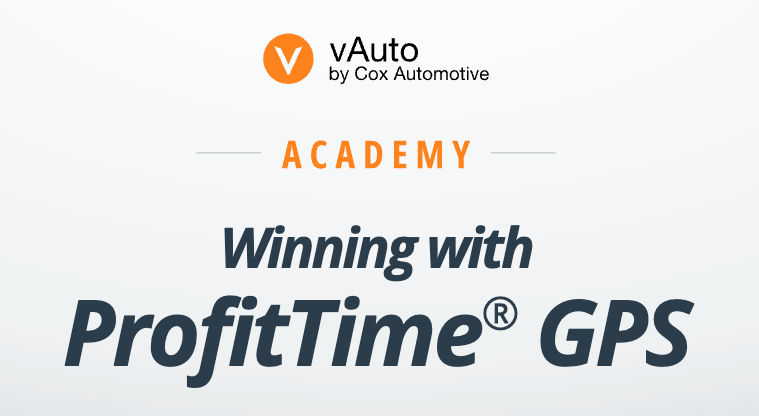If there’s one thing that’s top of mind for almost every dealer, it’s the pressure they face and feel around used vehicle sourcing.

Every dealer’s aware that, thanks to the disruption the COVID-19 pandemic created for new vehicle production in recent years, the supply of available used vehicles is constrained. Further, retail demand for used vehicles has been strong. Cox Automotive reports that dealers saw gains in retail used vehicle sales in 2024 compared to 2023, and the outlook’s favorable for even more sales in 2025: “The retail used-vehicle market is also forecast to expand year over year in 2025, despite tight inventory. Used retail sales will likely hit 20.1 million next year, delivering the best year since 2021,” according to the Cox Automotive “Five for 2025” forecast.
For dealers, their ability to grow their used vehicle sales and profitability will rest with their used vehicle sourcing team. In this vAuto blog, we’ll share an overview and pointers to help dealers thrive in what has become a more complex used vehicle inventory management and sourcing environment.
A Critical Post-Pandemic Shift in Used Vehicle Sourcing
For dealerships, the used vehicle market’s inventory supply and demand dynamics have spurred a reevaluation of traditional sourcing strategies and the adoption of innovative approaches to acquire vehicles and maintain, if not grow, their competitive edge.
You can see the effects of the reevaluation and response in dealership data from the National Automobile Dealers Association (NADA). In 2019, dealers sourced 27 percent of their used vehicle inventory from auctions, with about 63 percent coming from trade-ins with new or used vehicle purchase. The balance came from off-street/other purchases. In 2023, NADA reports auction-based inventory sourcing declined to about 18 percent, and street/other purchases accounted for 13 percent of inventory. Meanwhile, trade-ins accounted for roughly 67 percent—a sign that dealers are working harder to take in trade-ins as often as they can, rather than relying on auction-sourced vehicles as part of their inventory management strategy.
The rise of non-traditional sourcing channels creates two challenges—creating a multi-channel used vehicle sourcing forecast and strategy to maintain the optimal number and mix, and ensuring your acquisition teams can operate as efficiently as possible to optimize used vehicle sourcing across multiple channels.
Elevating Your Game: Maintaining Your Optimal Inventory Number and Mix
In today’s multi-channel environment, it’s important for dealers to create a used vehicle sourcing strategy that will help you consistently maintain the proper number and mix of vehicles in your inventory. Dealers know that having too few vehicles typically slows sales volume, and too many vehicles diminishes profitability. vAuto’s Global Search tool inside ProfitTime GPS helps dealers create and execute a used vehicle sourcing strategy.
The strategy-setting starts by asking key questions: What are your sales goals for the year, accounting for seasonal fluctuations and your business objectives? Based on your sales goals, and your past history of used vehicle sourcing across multiple channels, how many vehicles, or what share of vehicles, are you most likely to acquire from each channel? Based on your sales history, and current live market data, what vehicle segments and price points make the most sense for you to pursue?
By establishing an inventory strategy, dealers create baseline expectations for where they expect to source inventory and the types of vehicles they expect to source from distinct channels.
Use Technology to Make Multi-Channel Used Vehicle Sourcing Easier, More Efficient
General manager Joshua Clinton at Cape Coral (FL) CDJR has made efficient used vehicle sourcing across multiple channels a high priority. With Global Search inside vAuto’s ProfitTime GPS system, Clinton says the job’s much easier than it used to be.
“Global Search has reduced the complexity and time-consuming part of finding cars,” he says. “Global Search has really helped us narrow down and focus down on the cars we want, the cars we need and the cars that have the greatest income potential for us.”

For example, through Global Search’s integration with Kelley Blue Book Instant Cash Offer, Clinton has a better way to purchase vehicles his inventory needs directly from customers and prospects. “With Global Search and KBB, I can “hand over a list of 30 cars to my BDC and say, ‘I want you to focus on getting appointments on these 30 cars. It’s so much more intentional. It’s so much more focused. And, when you get a list of 30 vehicles, get appointments on 15 of them, and buy 10 of the vehicles I really wanted, that’s a difference maker.”
Clinton also uses Global Search to zero in on desirable vehicles in other channels, including auctions and trade-ins, particularly those they appraised and missed. “With Global Search, we can easily go to our missed appraisals and see vehicles we had in the showroom three days ago,” he says. “It’s a way to focus on the vehicles we need and can get right now.”
Managing Your Multi-Channel Used Vehicle Sourcing Proficiency
Another operational challenge related to the need for dealers to conduct used vehicle sourcing across multiple channels rests with ensuring how the vehicles you appraise and bring into your inventory across the channels fits your inventory strategy and business objectives.
Global Search also helps Clinton and other dealers measure and manage how well their inventory strategy is working across individual sourcing channels. The system offers Look to Book, Investment Value and other metrics to help dealers identify when the acquisition volume expectations they set in their strategy need attention and coaching to improve outcomes.
In addition, Global Search and ProfitTime GPS help dealers establish what the “right money” for any used vehicle should be and manage their appraisal teams to achieve the objective. With the tools, dealers can see which appraisers work best in each channel, and which channel tends to produce the most investment- and/or volume-optimal opportunity.
The end result of linking your used vehicle sourcing efforts to a clearly defined, and objective-based strategy, and then managing the execution of your strategy across multiple channels, is a used vehicle inventory that’s positioned to win in today’s ever-changing market.

















